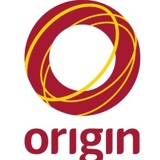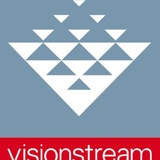Title Page
APLNG - Field Delivery Environmental Inspection / Site Visit
-
Property:
-
Conducted on
-
Inspected By
-
Comments: (for site visits, note relevant information here and disregard below inspection items)
Air Quality
-
1.1 Is there visual evidence of dust leaving site?
Noise and Vibration
-
2.1 Is there evidence of unapproved work occurring outside of normal construction hours - 6:30-18:30.
Water Management
-
3.1 Access to stream crossings must be restricted to defined access tracks to promote the rehabilitation of the surrounding riparian habitat.
-
3.2 Creek crossings stabilised using protective materials until vegetation cover is reestablished.
-
3.3 Have all watercourses / waterways been constructed I accordance with approved OE specifications?
-
3.4 Clearing slopes leading to creeks delayed until construction of the crossing is imminent, or alternative measures are employed to prevent erosion and sedimentation risk
-
3.5 No increase to water turbidity of creek or wetland due to construction
-
3.6 Routine, regular and frequent visual monitoring (e.g photos) must be undertaken while conducting works in a watercourse, waterway and or drainage feature.
Land Management
-
4.1 All vehicles, equipment, plant, materials and personnel within the approved areas
-
4.3 No spills or potential land contamination visible
-
4.2 Appropriate spill kits readily accessible
-
4.4 All vehicles on designated access roads and tracks
Soil Management
-
5.1 Soil and surface stability maintained hydro mulch, drill seed
-
5.2 Erosion control measures installed in accordance with site ESCP and maintained in working order until final construction reinstatement is completed
-
5.3 Soil should not be removed from site unless approved by APLNG Env Rep
-
5.4 Stockpiles do not impede natural or constructed surface drainage channels or access tracks.
-
5 .5 Topsoil stripping must not occur during rainfall events
-
5.6 Topsoil stockpiles are not mixed with subsoils, mulch or other materials
-
5.7 Topsoil stockpiles less than 2m
-
5.8 Sodic subsoils - may require the addition of gypsum or dolomite prior to the the reinstatement of topsoil
Erosion and Sediment Control
-
6.1 All requirements of the approved Australia Pacific LNG site specific Erosion and Sediment Control Plan implemented
-
6.2 Sediment control structures constructed / installed as specified approved drawings and designs.
-
6.3 Do ERSED controls require modification, maintenance or repair?
Dangerous Goods and Hazardous Materials
-
7.1 Temporary bunding, drip trays or impermeable matting used to prevent spillage from any in field refuelling or maintenance (8.26)
-
7.2 Refuelling conducted >100m from creeks and wetlands
Waste Management
-
8.1 No waste or litter on site including in trenches and excavations
-
8.2 Waste bins readily available and suitable for use
Protection of Flora
-
9.1 All environmental exclusion zones clearly flagged off and signed?
-
9.2 No disturbance outside approved area
-
9.3 Vegetation to be retained marked and protected
Protection of Fauna
-
10.1 Fauna Spotter Catcher present during clearing - for low risk sites environmental advisor present and Fauna Spotter Catcher available
-
10.2 Trenches and open excavations inspected for trapped fauna - inspected morning, evening and prior to backfilling
-
10.3 Pipe caps over ends of all strung sections of pipes. Spare pipe caps available on site
Weed and Pest Management
-
11.1 All weed management areas clearly flagged and signposted
-
11.2 All vehicles and plant hold current weed hygiene inspection certification /sticker.
-
11.3 Weed material kept separate from soil and vegetation / mulch
Additional Comments
-
Comments
Leightons Representative
-
Signature
-
Role:
Other Inspectors:
-
Signature:
-
Role:








